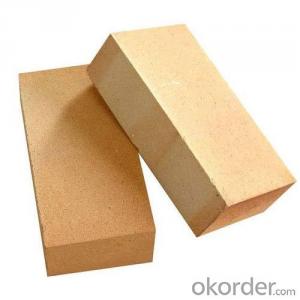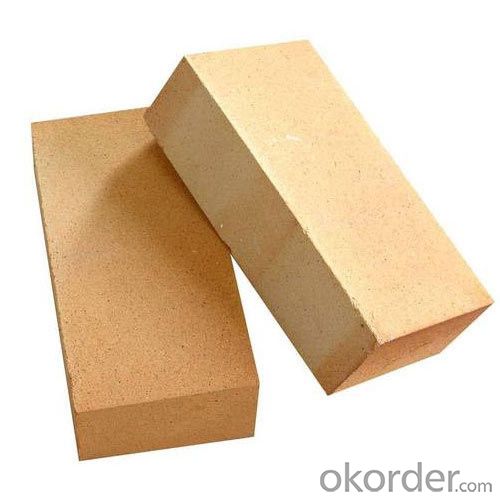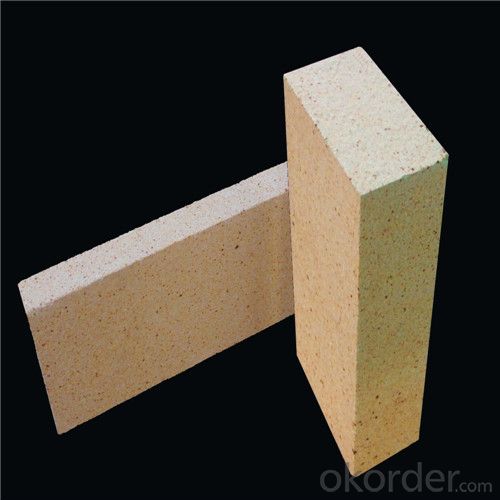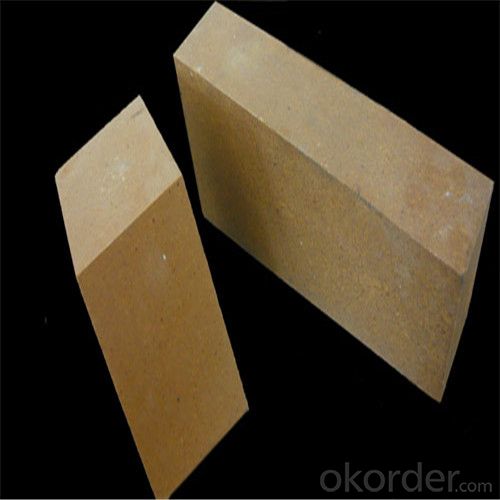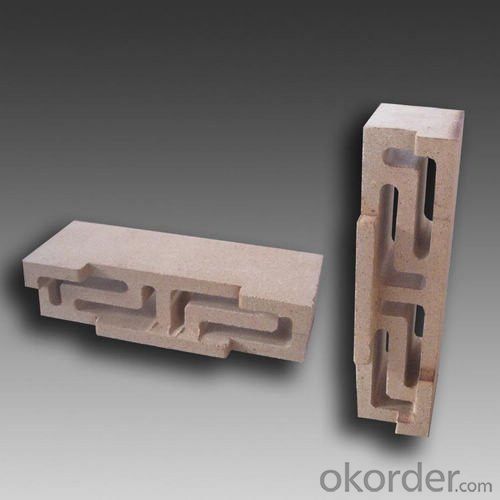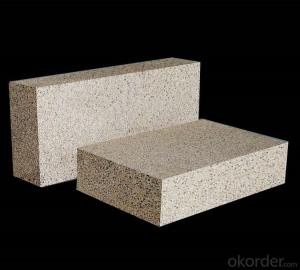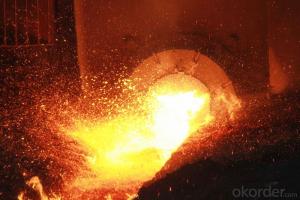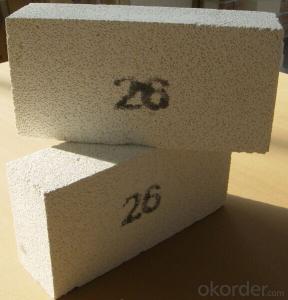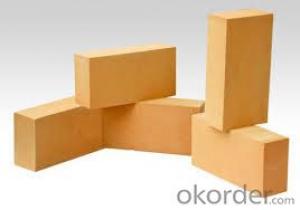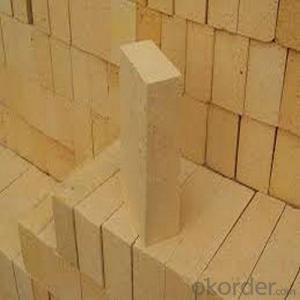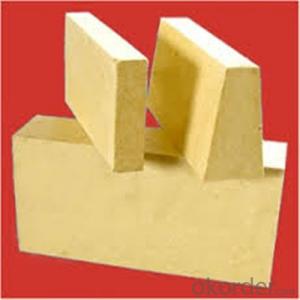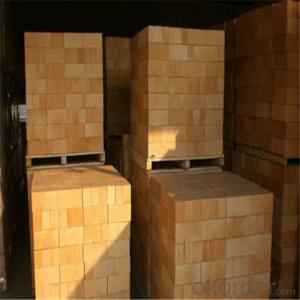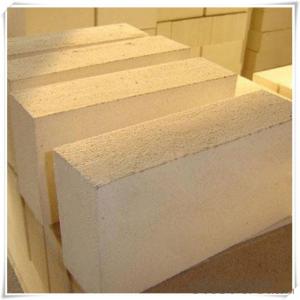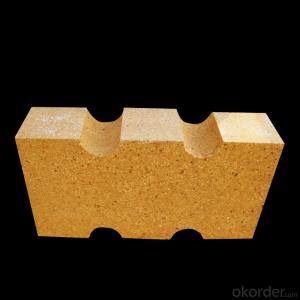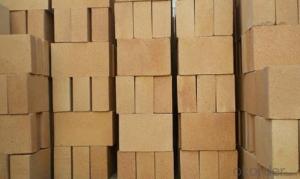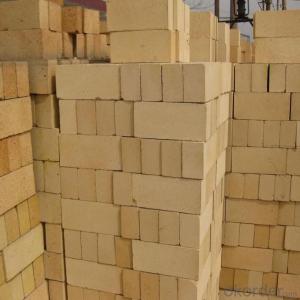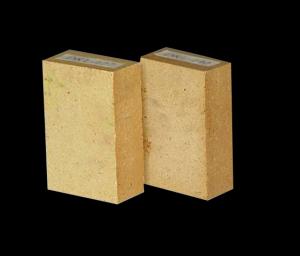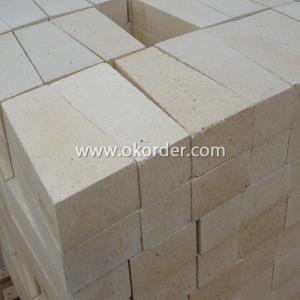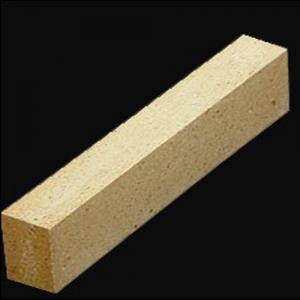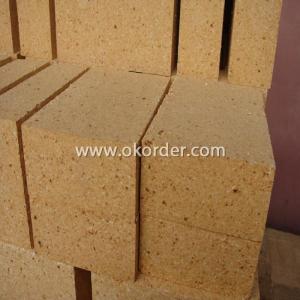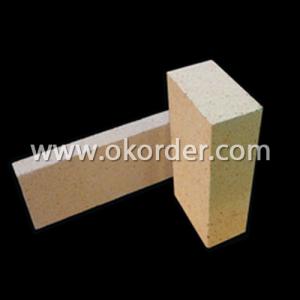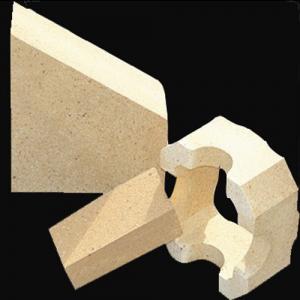Fireclay Brick for Acid Kiln Lining
- Loading Port:
- Shanghai
- Payment Terms:
- TT OR LC
- Min Order Qty:
- 100 pc
- Supply Capability:
- 2000000 pc/month
OKorder Service Pledge
OKorder Financial Service
You Might Also Like
General Information of Fireclay Bricks
CMAX fireclay bricks are made from clinker clay. The alumina content ranges from 36% to 48%.
Feature of Fireclay Bricks
Low thermal conductivity
High refractoriness
High mechanical strength
Excellent thermal shock resistance
Technical Data of Fireclay Bricks
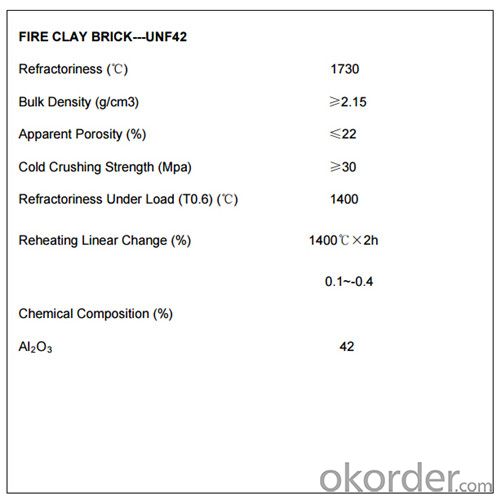
Application of Fireclay Bricks
CMAX fireclay bricks are commonly applied in blast furnace, hot blast furnace, teeming ladle, glass furnace, etc.
Image of Fireclay Bricks
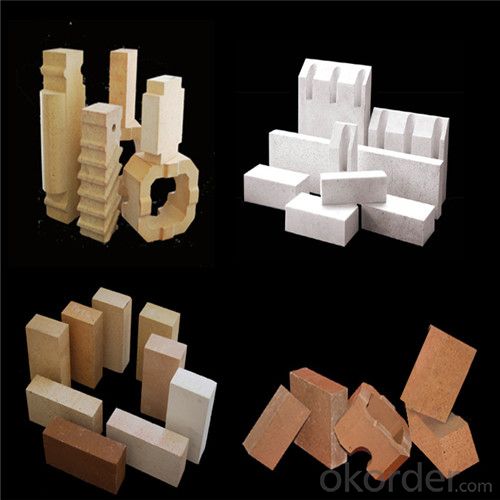
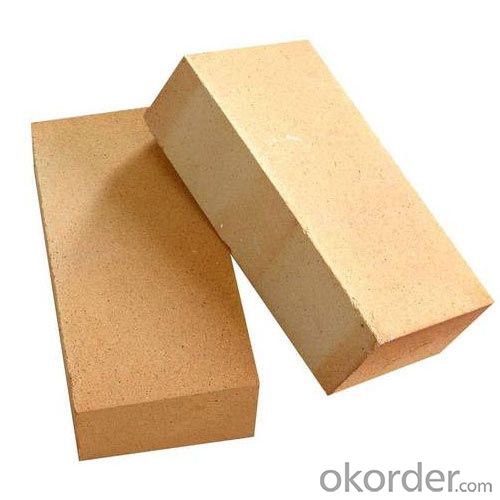
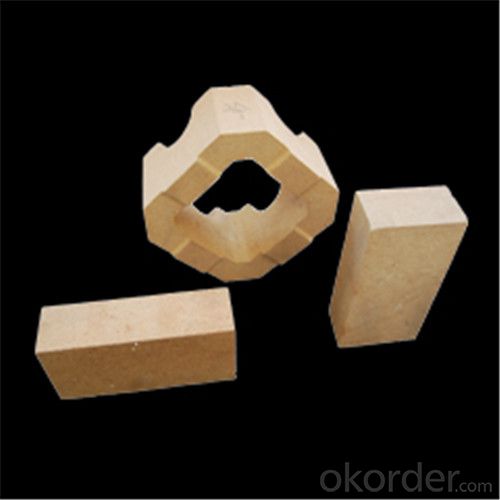
FAQ
Q1: How do you control the products quality?
A1: With strict quality control system throughout the materials selection and production process, our refractory and ceramic fiber products quality is effectively controlled to meet customer requirements.
From the raw materials selecting, our quality control begin. The quality certificates of raw materials are required and each batch will be tested before using. During production, the quality control are conducted by workers and then each piece will be sorted and examined by quality supervis
Q2: What`s the lead time for my order?
A2: It depends on customers’ requirements and our production schedule. And usually we need 30-60 days for refractory bricks,10-25 days for unshaped refractory materials and 10-20 days for ceramic fiber blankets.
Q3: Can you offer Door-to-Door delivery?
A3: Yes, but only for some countries such us U.S., UAE, Saudi Arabia, Iran, and Russia, etc.
Q4: What is the minimum quantity?
A4: There is no minimum order quantity. Depending on the item and processing, there may be a minimum production required, however we can offer a quotation based only on the quantity you need.
- Q: Small size black brick can replace refractory bricks for wood burning fireplace?
- Absolutely not. Refractory brick's color looks like that of stone which is also very antique. Black brick can also be pasted on refractory brick. To cope with the use of refractory cement
- Q: Are sintered brick concrete bricks?
- Fired bricks are not concrete bricks.According to the different production process of bricks into sintered brick and non sintered brick. Sintered brick in China has more than two thousand years of history, is still a very wide range of wall materials.
- Q: What are the main raw materials of refractory brick and runner brick?
- Types of refractory bricks are divided into low-grade and high-grade. generally, siliceous, semi siliceous and high aluminous runner brick brick have higher requirements. If it needs to contact melting in high temperature molten steel directly, then it is high alumina(the main raw material is clinker of bauxite with high alumina, corundum( brown corundum and white corundum), the refractoriness is high, lower than 1580 DEG C temperature, but the actual using temperature reaches 1630 DEG C
- Q: What are the ingredients of brick?
- Artificial small bulk building, divided brick (clay brick) and non sintered brick (sand lime brick, fly ash brick etc.), commonly known as brick. Clay to clay (including shale, coal gangue powder) as the main raw material, through mud processing, molding, drying and roasting and. Chinese in the spring and Autumn period has created a square and brick, Qin and Han Dynasties brick technology and production scale, quality and variety have significant development, known as "Qin Zhuanhan tile".
- Q: How aluminium oxide becomes a entity from the the form of powder (such as a ball, a stone, or a refractory brick)?
- Just like the process of making steamed bun from flour. Ball milling ---in the auxiliary material to make the slurry --- suppress the body --- high temperature calcination
- Q: What kind of refractory brick is used for industrial furnace?
- High aluminum in cement plant. Mills use MgO-C, high aluminum ect; glass furnaces use Luo 8. different kiln and parts use different bricks.
- Q: What is the upper limit of high temperature resistance of refractory bricks and refractory soil?
- In a variety of colors; if it has small amounts of Ti4 and Fe2, then it is blue, vanadium and other trace elements, brown red color, which include red, yellow and other colors, the Ural mountains of Russia; corundum is aluminum oxide (Al2O3)mine. Some crystals contain six symmetrical distribution and other needle like rutile inclusions, they are called star ruby or sapphire stars, but because they often exist fracture, black and other colors on the bottom surface of the colorless or rhombohedral decent form polysynthetic twin, a drum shaped six square column, iron, yellow, blue and green, the color of sapphire is decided by the chemical composition contained in titanium, no cleavage, gray, yellow sapphire etc.. Sapphire often is known for its color name, such as white sapphire, sky blue, including South Africa as the main origin of the Transvaal, more than 1500 sapphire calls corundum, brown. Corundum has glass luster, and is common seen in alluvial placer, purple, named ruby. Produced igneous and metamorphic rocks, which are relatively barren. Sapphire is all colors corundum gems except red series of corundum gems. Does ruby refer to corundum with all red hues? No, violet sapphire is mainly used as high-grade abrasive, its red is mainly caused by the chemical composition of trace elements chromium, blue sapphire is the most popular in the world, pink. The crystal belongs to the three party system, green. Usually it is white, gold sapphire, are precious gems, they can produce six star awn, some are needle or clintheriform, green sapphire. Aggregation is block or columnar.
- Q: The difference between fireclay brick and refractory cilica brick in the application.
- Good thermal shock stability, long-term use temperature is not higher than 1300 degrees, high temperature, high strength, low price of clay brick characteristics, thermal shock stability is the worst, a scrap, can be long-term used under the condition of high temperature (exceed 1400 degrees Celsius) . The temperature of silica brick's soft bearing is close to the melting point. Other industries basically don't use, but the comprehensive performance of high temperature is not good, widely used in low temperature parts of a variety of furnaces. The silica brick is generally used in the coke oven and glass kiln, but anti alkali erosion ability is poor
Send your message to us
Fireclay Brick for Acid Kiln Lining
- Loading Port:
- Shanghai
- Payment Terms:
- TT OR LC
- Min Order Qty:
- 100 pc
- Supply Capability:
- 2000000 pc/month
OKorder Service Pledge
OKorder Financial Service
Similar products
Hot products
Hot Searches
Related keywords
